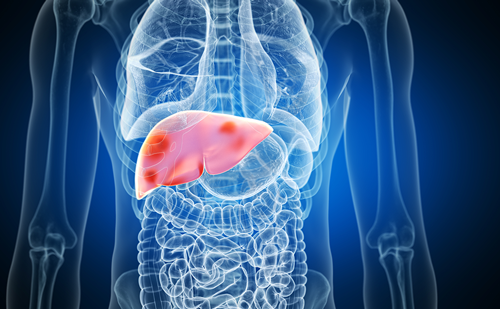Biphasic insulin aspart 30 (BIAsp 30) is a premix insulin analogue containing 30 % rapid-acting insulin aspart (IAsp) and 70 % protamineretarded IAsp. With mealtime administration, the rapid-acting IAsp component provides coverage for postprandial glucose (PPG) while the protaminated component provides intermediate coverage for basal glycaemic control. Therefore, premix insulin analogues, such as BIAsp 30, offer a convenient way for patients to control fasting glucose and PPG without the need for two insulins.
Biphasic insulin aspart 30 (BIAsp 30) is a premix insulin analogue containing 30 % rapid-acting insulin aspart (IAsp) and 70 % protamineretarded IAsp. With mealtime administration, the rapid-acting IAsp component provides coverage for postprandial glucose (PPG) while the protaminated component provides intermediate coverage for basal glycaemic control. Therefore, premix insulin analogues, such as BIAsp 30, offer a convenient way for patients to control fasting glucose and PPG without the need for two insulins. Due to this simplicity, premix insulins can assist patients through the often difficult step of insulin initiation; and by adding extra doses with meals (up to three times daily), they also provide a straightforward route to insulin intensification.
Insulin initiation is an important and necessary step for many patients with type 2 diabetes, but there are a number of barriers that can delay patients and their physicians in taking this action. Every patient will have individual concerns, so it is important for the healthcare provider to identify and respond to these on a case-by-case basis. However, common barriers include worries about incorporating somewhat inflexible and complex insulin dosing regimens into daily life, worries about public injection or fear of hypoglycaemia.1,2 There may also be reluctance on the part of the healthcare provider, who may feel that insulin initiation is a time-consuming and complex process and may lack the time or resources to provide adequate education and training.1,2 Diabetes self-management education is an important part of the insulin initiation process.1,3 Patients who understand the need for insulin initiation, and who know what options are available and which ones might be most appropriate for them, are more likely to accept insulin initiation. Similarly, practical guidance on self-managing their diabetes with insulin provides patients with the confidence to make this major change in their diabetes therapy.
Another important factor in insulin initiation is providing patients with simple insulin regimens that they can incorporate easily into their everyday life. Therefore, many patients will initiate a once-daily insulin, such as a premix insulin taken with their main meal or existing basal insulin. In choosing appropriate options, factors including lifestyle, current glycaemic control and preference for injection device will need to be considered. As their diabetes progresses, individuals may need to intensify treatment beyond once-daily dosing. With premix insulins, it is straightforward to add extra doses with meals.4 Studies have shown that twice-daily and three-times-daily BIAsp 30 are efficacious and safe.5–7 For basal insulins, intensification is more complex. Patients may need to add a second rapid-acting insulin to one or more meals or switch to a premix insulin, both of which require patients to familiarise themselves with a new insulin. Premix insulin analogues also offer a switching option for patients on biphasic human insulin (BHI) who find it inconvenient having to inject at least 30 minutes before meals, and who are not achieving appropriate glycaemic control or who are experiencing tolerability issues. BIAsp 30 can be injected immediately before or after a meal, which offers greater convenience for patients and can be useful for those with irregular eating habits.8,9 In addition, premix insulin analogues offer a more physiological insulin profile with a faster onset and shorter duration of action of the rapid-acting component than BHI 30. In contrast, the longer duration of action of the rapid-acting component of BHI 30 increases the risk of patients experiencing hypoglycaemia as the PPG spike declines. This may explain why BIAsp 30 shows benefits over BHI 30 in terms of reduction in major and nocturnal hypoglycaemic episodes and more effective PPG control.10,11 Premix insulin analogues also offer a switching option for patients who no longer achieve appropriate glucose control with once-daily basal insulin or for those patients who do not require, or who are unwilling to consider, a basal–bolus approach.
This issue of European Endocrinology includes a number of interesting and clinically relevant case studies of patients initiating or switching to BIAsp 30. The case study reported by Professor Wenying Yang examines the role of BIAsp 30 in insulin initiation in a patient failing oral antidiabetic drug therapy. Professor Jens Sandahl Christiansen presents case studies of two patients switching to BIAsp 30 from BHI 30 to address issues with glycaemic control and nocturnal hypoglycaemia, respectively. Finally, Professor Gumprecht reports on the case of a patient switching to BIAsp 30 after failing to achieve treatment goals with basal insulin.







